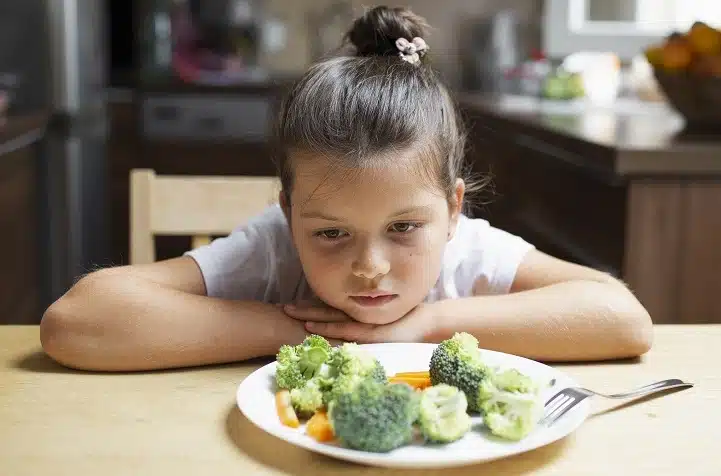Is your child often tired, pale, or less energetic than usual? It could be more than just a rough week—it might be a sign of iron deficiency. Iron plays a critical role in supporting your child’s growth, brain development, and immune system. Without enough of it, kids may begin to show noticeable signs that something’s off.
At Focus on Kids Pediatrics in Littleton, CO, we regularly see children with low iron levels—especially toddlers, picky eaters, and rapidly growing kids. The good news? Iron deficiency is common, highly treatable, and often preventable with the right support.
In this article, we’ll cover the most common symptoms, causes, and actionable steps parents can take to keep their kids healthy and thriving.

What is Iron Deficiency?
Iron deficiency occurs when the body doesn’t have enough iron to make hemoglobin—the protein in red blood cells that carries oxygen. When iron levels drop too low, it can lead to iron-deficiency anemia, a condition that reduces oxygen delivery throughout the body and makes kids feel weak and tired.
Common Symptoms of Iron Deficiency in Children
Many symptoms of low iron are easy to overlook because they build gradually. If your child is experiencing one or more of these signs, it’s worth a conversation with your pediatrician:
- Fatigue or low energy
- Pale skin or gums
- Cold hands and feet
- Poor appetite
- Slower growth or weight gain
- Irritability or mood swings
- Trouble concentrating or doing schoolwork
- Frequent infections due to lowered immunity
You may also notice more subtle clues like brittle nails or your child craving non-food items like ice or dirt (a condition known as pica).
For comparison, read about how dehydration in kids can also lead to fatigue and low energy.
What Causes Iron Deficiency in Kids?
There’s no one-size-fits-all cause, but several factors can lead to low iron levels in children:
1. Inadequate Iron Intake
Picky eaters, children on plant-based diets, and toddlers transitioning from breastmilk or formula often don’t get enough dietary iron. Learn how to support balanced nutrition in our post on the importance of a balanced diet for kids.
2. Rapid Growth
Periods of rapid growth—especially in toddlers and teens—require more iron. If intake doesn’t keep up, the body can quickly become deficient.
3. Excessive Milk Consumption
Drinking large amounts of cow’s milk (more than 24 oz a day) can interfere with iron absorption and reduce appetite for iron-rich foods.
4. Chronic Blood Loss
This could be from heavy menstruation in teens or minor bleeding in the digestive tract due to food intolerances or other medical conditions.
5. Premature Birth or Low Birth Weight
Babies born early may have lower iron stores and need additional monitoring and supplementation during infancy.
What Parents Can Do to Boost Iron Levels
The good news? Iron deficiency is highly manageable, especially when caught early. Here are steps you can take to help restore and maintain healthy levels:
1. Incorporate Iron-Rich Foods
Some kid-friendly, iron-rich foods include:
- Lean red meats, chicken, turkey
- Beans, lentils, and tofu
- Iron-fortified cereals and oatmeal
- Spinach and leafy greens
- Egg yolks
Pairing iron with vitamin C (like oranges, strawberries, or tomatoes) helps boost absorption.
2. Cut Back on Excess Milk
Limiting cow’s milk to 16–24 ounces per day helps avoid crowding out iron-rich foods and improves absorption.
3. Ask About Supplements (If Needed)
If your child is at risk or has been diagnosed with iron deficiency, we may recommend a daily supplement. These are typically safe and effective but should only be used under pediatric guidance.
4. Watch for Hidden Signs
Keep an eye out for behavior or energy changes, especially during growth spurts or dietary transitions. Check out our guidance on how to start baby food to ensure your child gets enough iron early on.
When to Call Your Pediatrician
You should schedule an appointment if:
- Your child shows multiple symptoms listed above
- They’ve had previous issues with anemia or low energy
- You’re unsure if their diet meets nutritional needs
- You have a family history of iron deficiency
We can run a simple blood test during a wellness visit to check your child’s iron and hemoglobin levels. Regular pediatric checkups often include anemia screening during key stages of development.
Final Thoughts
Iron may be a small mineral, but its impact on your child’s growth, learning, and energy is huge. Luckily, with a balanced diet, smart habits, and guidance from your pediatric team, you can prevent and reverse iron deficiency with ease.
At Focus on Kids Pediatrics, our team is here to support your child’s nutrition and development at every stage. Whether you’re worried about energy levels, picky eating, or lab results, we’re here to help you get clear answers and feel confident moving forward.
Visit or call us today to schedule your child’s next checkup with our compassionate Littleton team.


